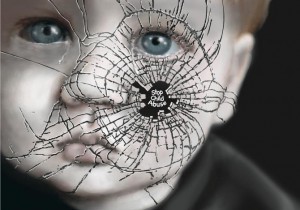Domestic Violence(DV) is a pattern of behavior that one person in a relationship uses to control the other. The behavior may be verbally, emotionally, physically, financially, or sexually abusive.
How prevalent is Domestic Violence?
- Nearly 1 in 4 women report having experienced violence by a current or former spouse or partner during their life.
- 1 in 6 children have witnessed a parent being assaulted.
- This number rises to 1 in 3 for teenagers.
- 15.5 million children in the United States live in a home where Domestic Violence has occurred in the last year.
-
Approximately 1 in 3 adolescent girls in the U.S. is a victim of physical, emotional, or verbal abuse from a dating partner, far exceeding victimization rates for other types of violence affecting youth.
DV’s impact on children in the home
Children who witness Domestic Violence often have conflicted and contradictory feelings about their parents. Often children feel torn over loyalties and caught in the middle of the conflict.
Children exposed to domestic violence may develop a wide range of problems, including interpersonal skill deficits, psychological and emotional problems such as depression and PTSD, and externalizing behavior problems.
problems, including interpersonal skill deficits, psychological and emotional problems such as depression and PTSD, and externalizing behavior problems.
Children react to exposure to violence in different ways, and many show remarkable resilience. Studies suggest that as support in a child’s life increase, the problems he or she experiences may actually decrease. Children who have experienced profound emotional distress or trauma are largely dependent for their recovery on the quality of their relationship with their caretaking parent.
DV and child abuse
Children subjected to child abuse are often exposed to other forms of risk. In families in which one form of violence is present, there is an increased risk for others. Research has shown that child abuse and DV often co-occur. In fact, some research as shown that upwards of 50% of homes where DV is occurring, child abuse is also occurring. The numbers vary between physical, sexual, emotional and neglect rates with physical abuse being the most common.
What can I do as a parent in a DV situation?
Many parents make special efforts to try to keep the abuser from also abusing their child. Regardless, even just witnessing DV often has varies and lifelong impact on a child. This includes not just how a child views what a relationship entails, but can impact emotional factors, behaviors and substance abuse just to name a few.
Talking to your child about DV
Getting help.
Most children are very resilient and with support, often are able to rise above any childhood trauma they may have experienced. The seeking out of supports is a vital first step. There are over 2,000 DV services cites in the US alone. There are online resources, such as the National Coalition Against Domestic Violence (www.ncadv.org), as well as national hotlines, such as The National Domestic Violence Hotline (1-800-799-SAFE).
Mercer County has its very own victim service agency; AWARE. This agency offers a wide range of emergency response, housing, legal and advocacy supports throughout the county. If you or someone you know needs help, call 1-888-981-1457, anytime day or night.
